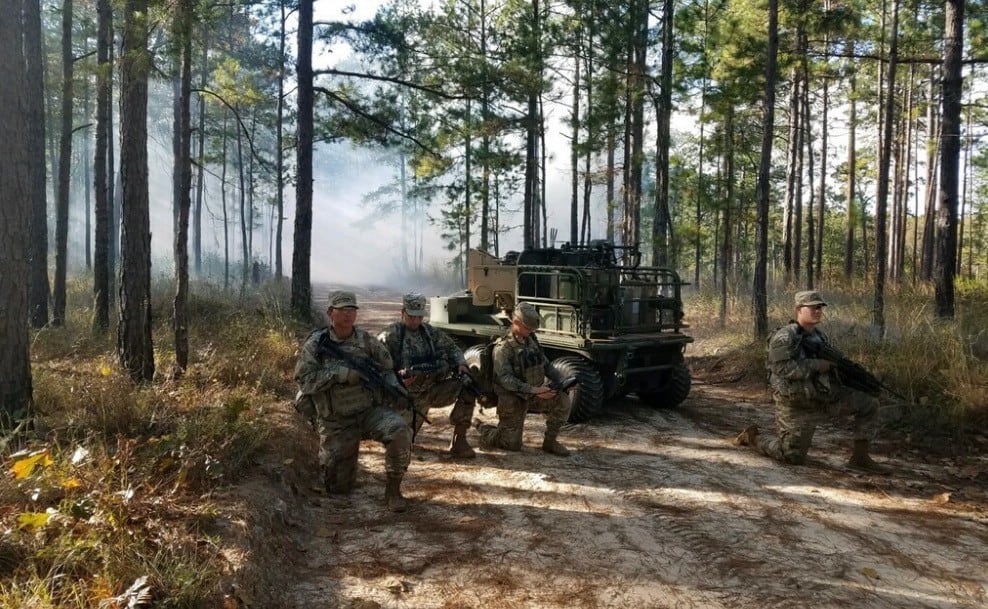Scientists have discovered a new method of harnessing energy that could help future troops harvest power from heat sources, even at night.
The Army-funded work by researchers at the University of Michigan resulted in a paper published recently in Nature Communications.
This method “opens the door” for new ways of gathering energy, first for military systems but eventually for all things electronic.
“The possibilities are endless,” Dr. Pani Varanasi, Army Research Laboratory program manager, told Army Times.
RELATED

Once fully developed, the method could provide a lightweight, portable, expeditionary energy converter at the “point of need,” day or night.
A fire, engine heat, perhaps body heat one day, could all charge devices, providing power on-the-go without hauling tankers full of fuel.
For some time, there has been a way to convert heat, or thermal energy, into electricity. It’s known by the term “far-field thermophotovoltaics” or FF-TPVs.
If something in that very long word sounded familiar, it might be the “photovoltaic” part. That’s because that’s essentially what solar panels are. They make electric current from sunlight.
And while that technology is advancing, it can’t make electricity at night.
That’s where the new process, known as “near-field thermophotovoltaics,” comes in.
The thermo part is also crucial.
That’s because you can’t store heat but you can story electric energy, like with a battery.
“What researchers have proven possible is bringing the heat source closer, grabbing more energy for more electricity, an order of magnitude more, while not destroying the receiver with too much heat,” Dr. Pani Varanasi, Army Research Laboratory program manager, told Army Times.
“They are creating a situation where we are able to explore new energy conversion technologies, reduce energy losses and are able to convert more heat into usable energy,” Varanasi said.
“They’re creating a situation where we’re able to explore, reduce the losses, taking advantage of more heat,” Varanasi said.
Much of this comes down to wavelengths. Light coming off surfaces has wavelengths that depend to some extent on the specific materials of the surface and their temperature. The interactions between materials and light also vary from one material to another, Varanasi said.
“This was achieved by fabricating thin-film TPV cells with ultra-flat surfaces, and with a metal back reflector,” said Dr. Stephen Forrest, professor of electrical and computer engineering, University of Michigan.
All of those terms may be new to you. But they’re not new to science.
It was the method they used for these existing materials that made the difference, Varanasi said. The new combination allowed more heat to be absorbed, he added.
This remains early-stage, laboratory research. Any fielding of this capability could be decades away.
But the theory of this method came into the field more than 60 years ago and took nearly the past 10 years to reach the point where the materials and methods have proven it possible, he said.
Todd South has written about crime, courts, government and the military for multiple publications since 2004 and was named a 2014 Pulitzer finalist for a co-written project on witness intimidation. Todd is a Marine veteran of the Iraq War.




